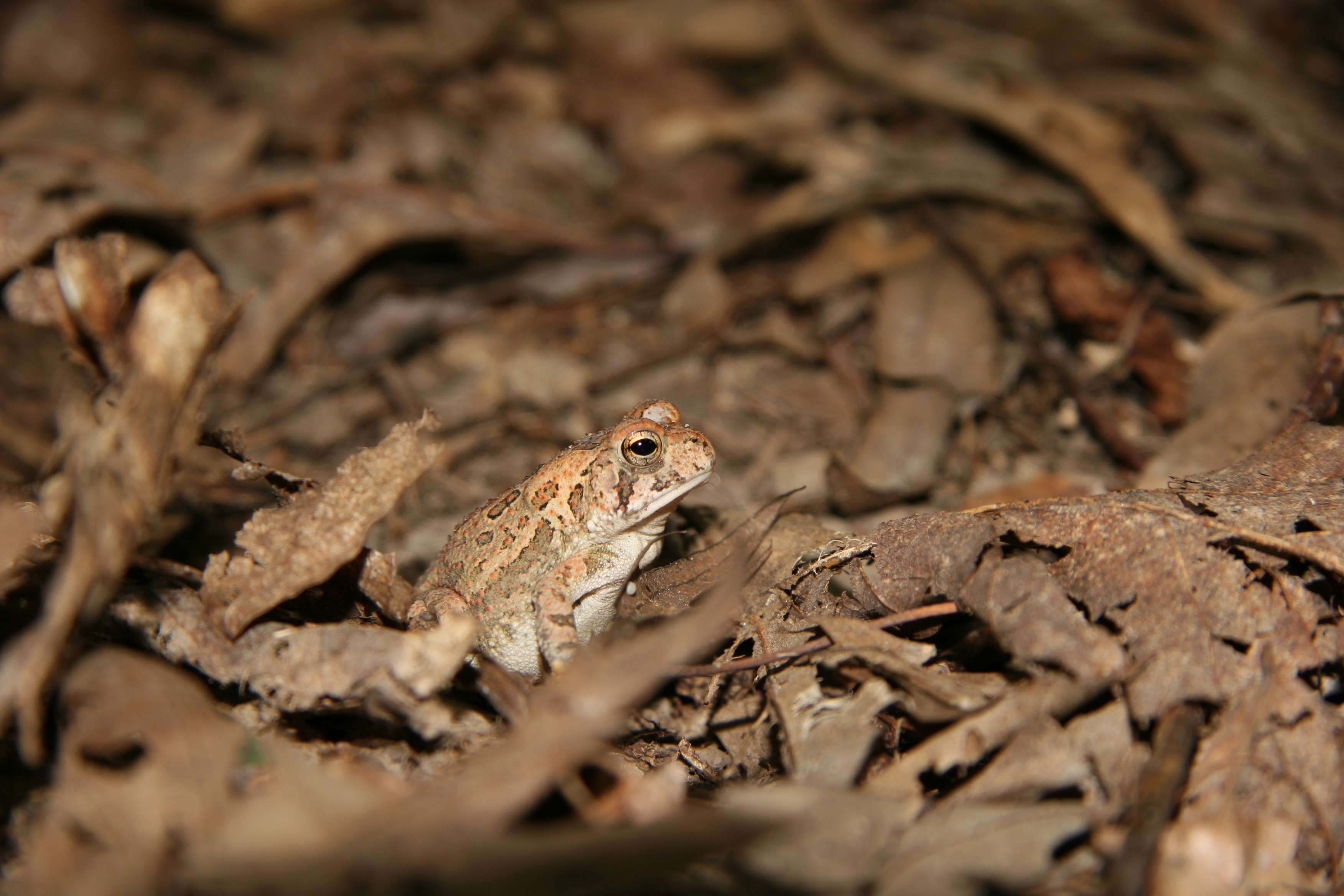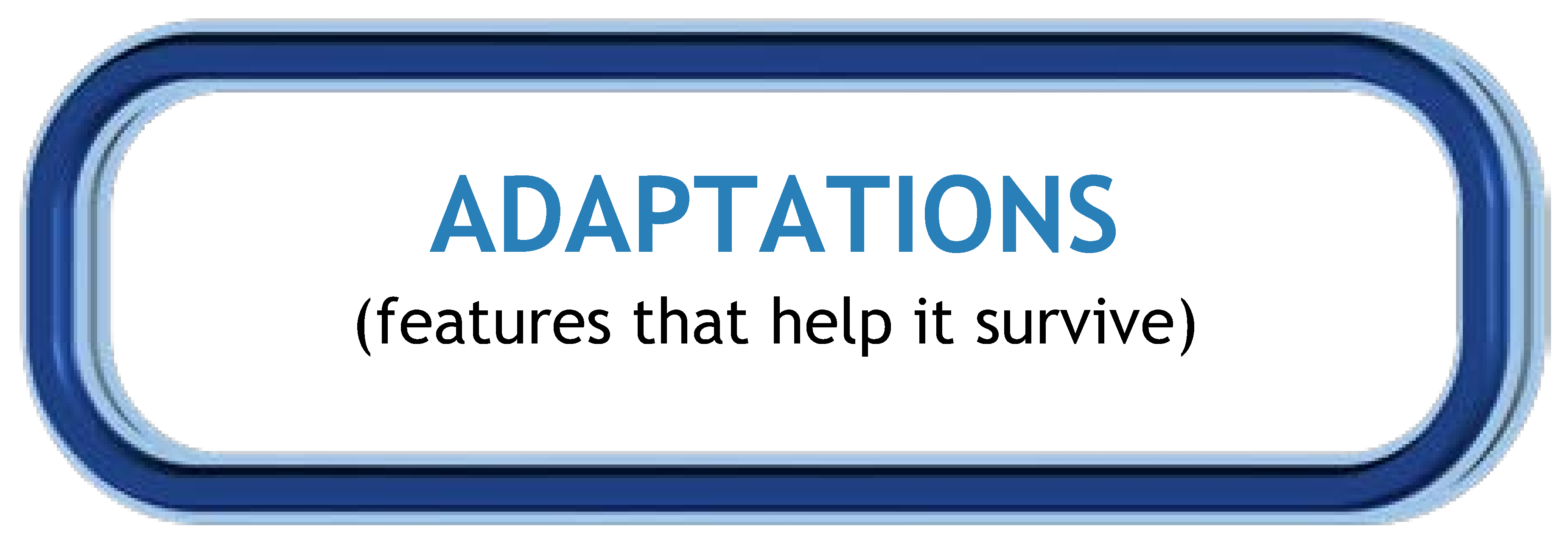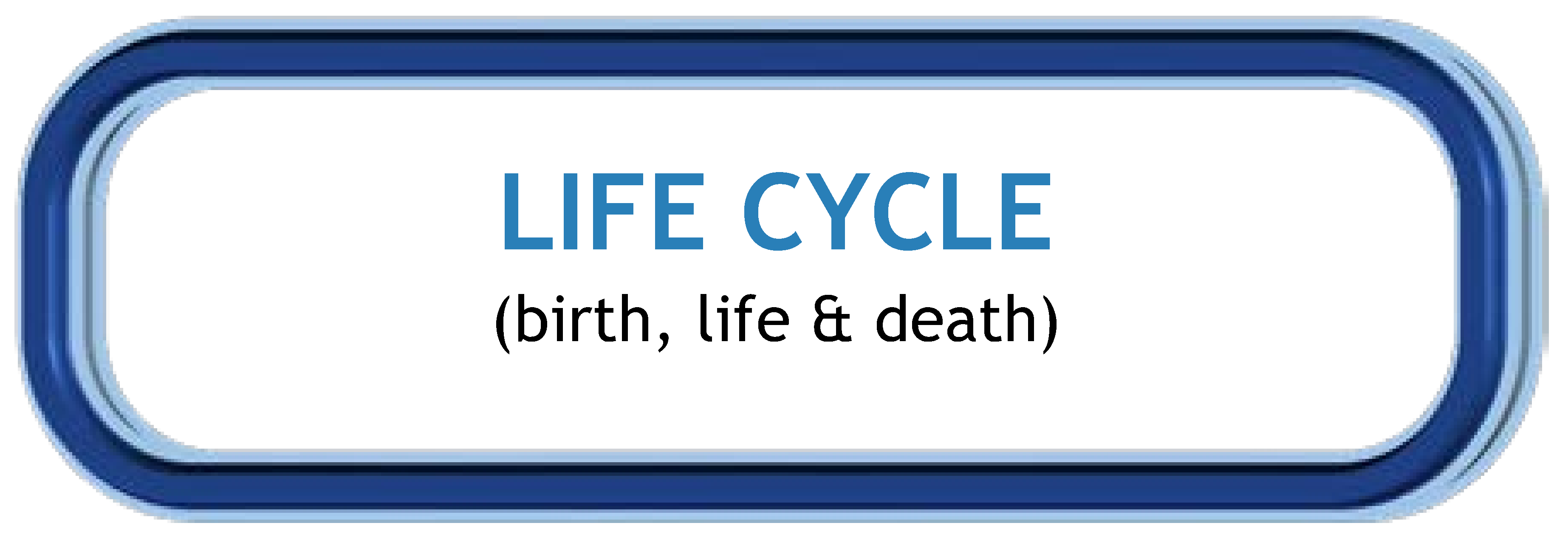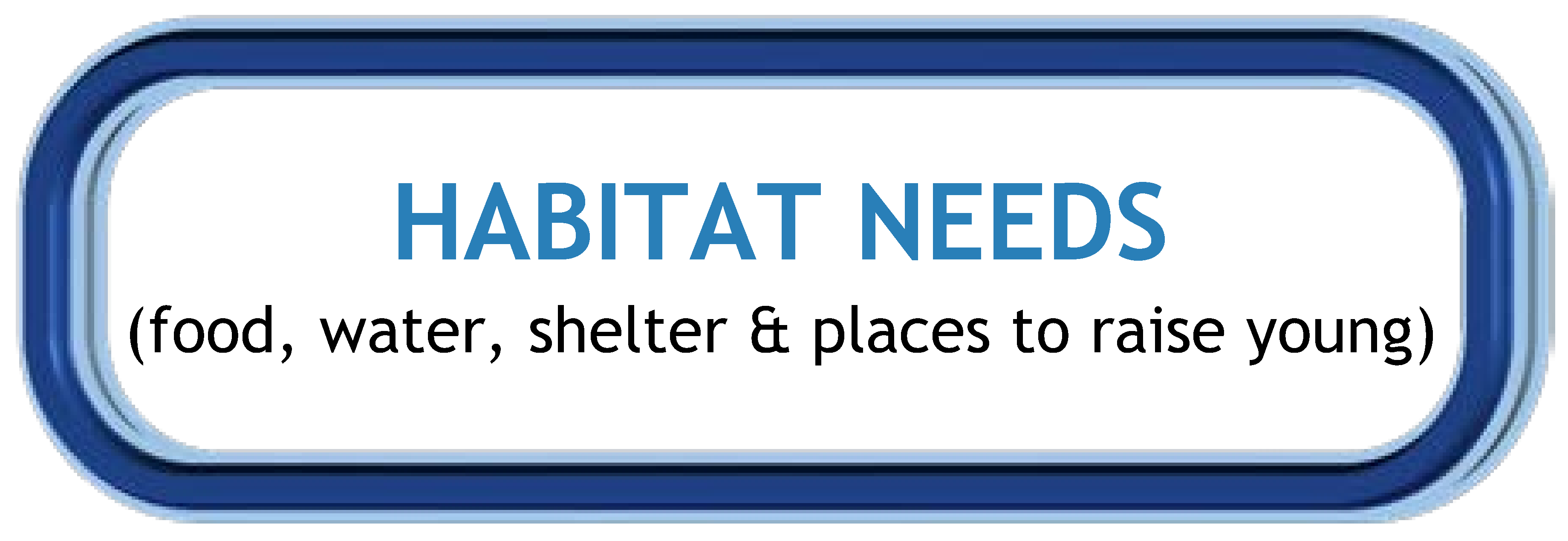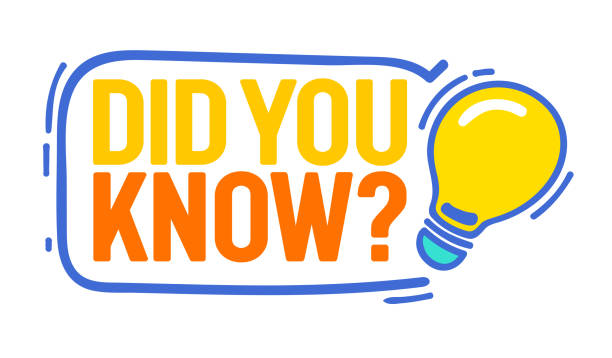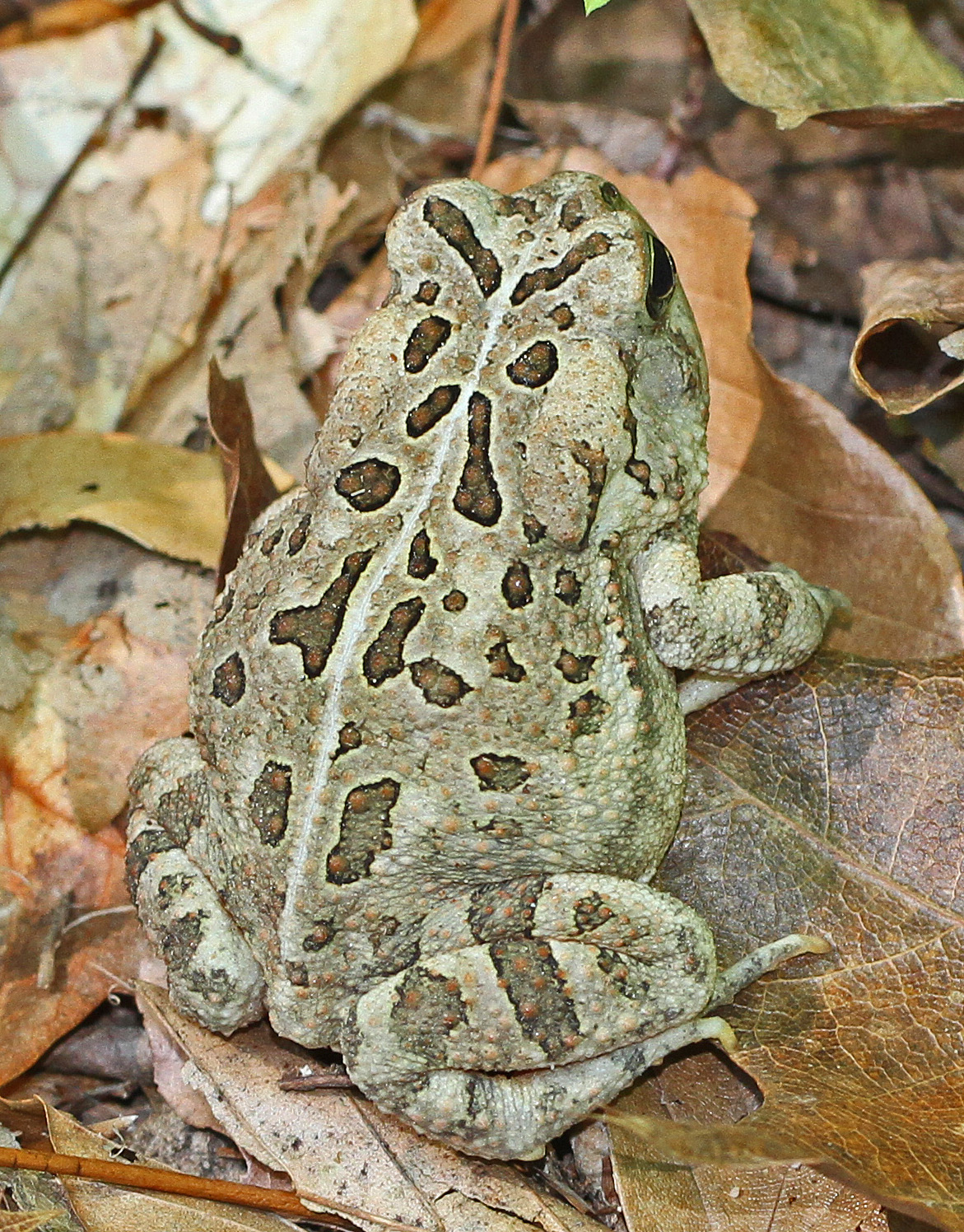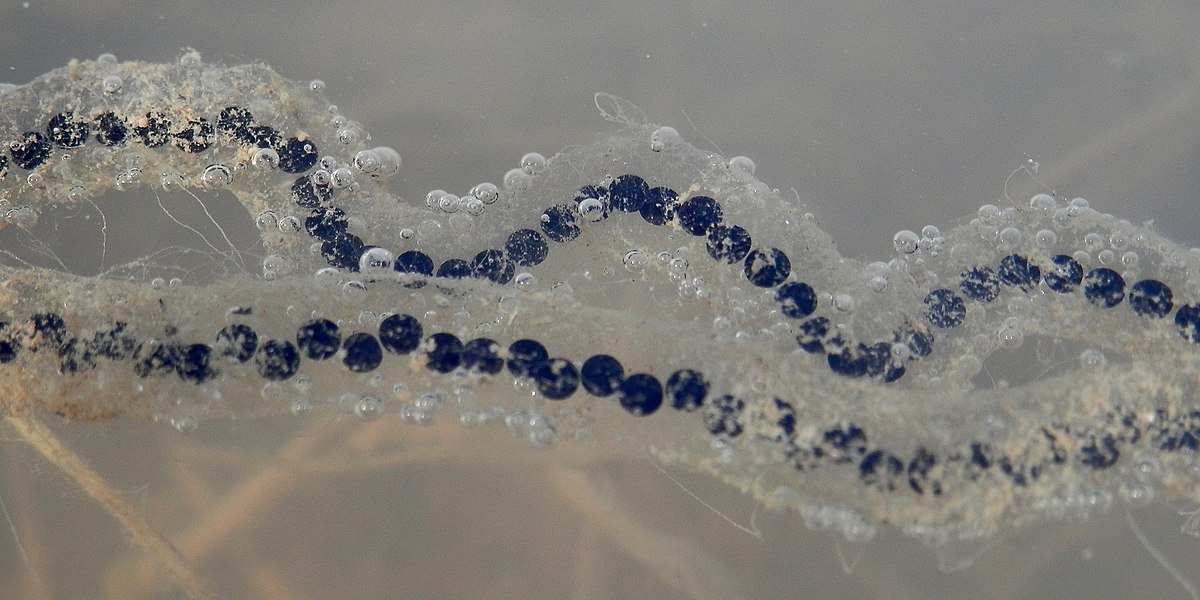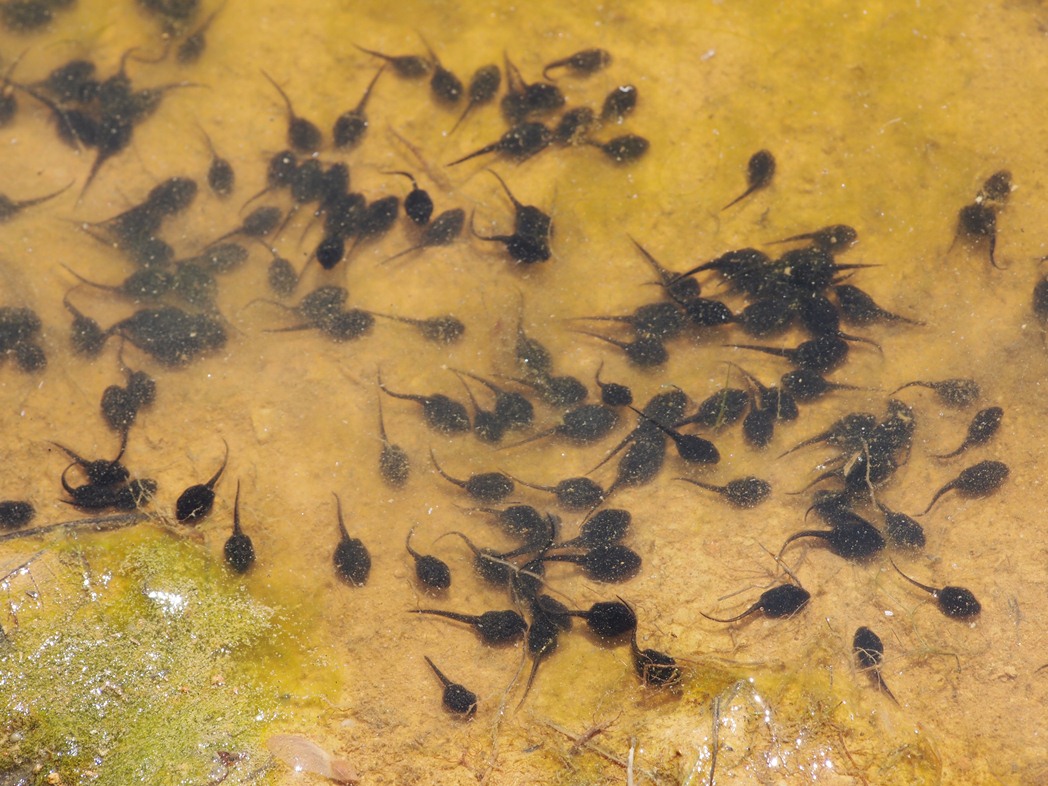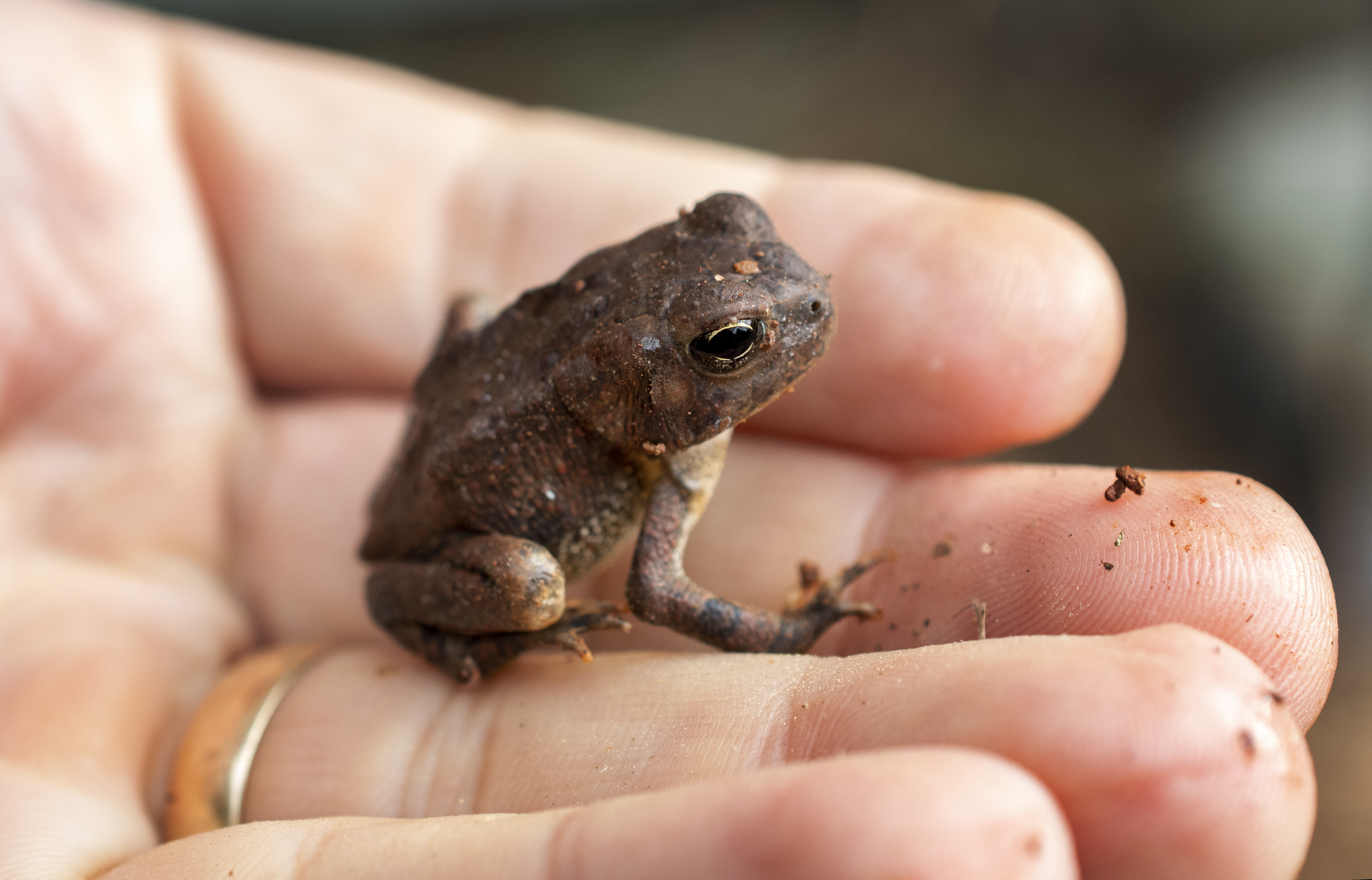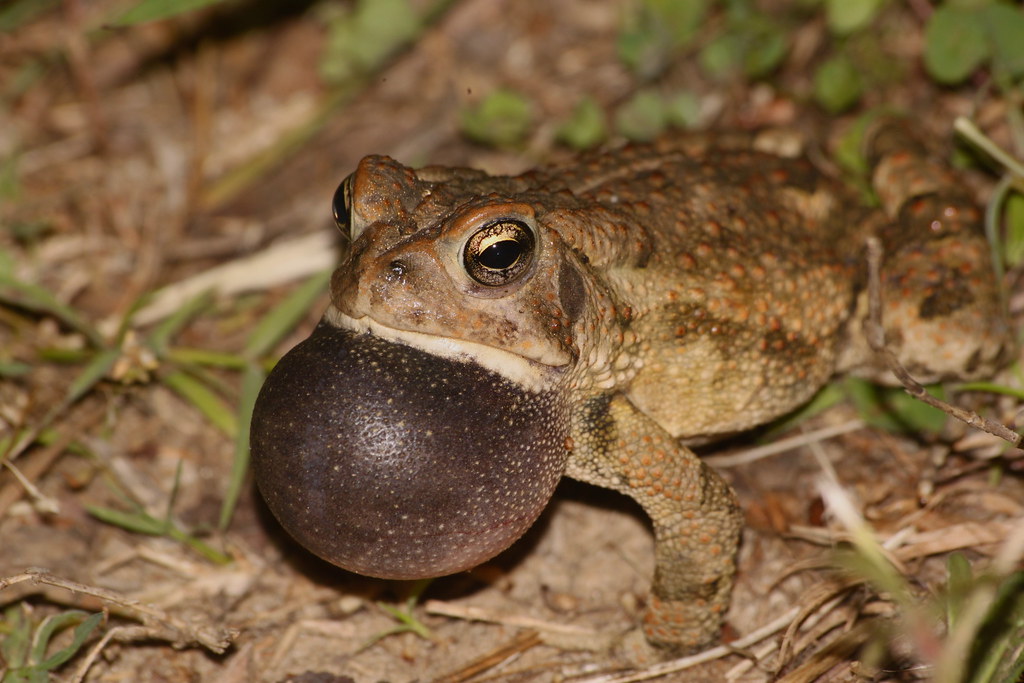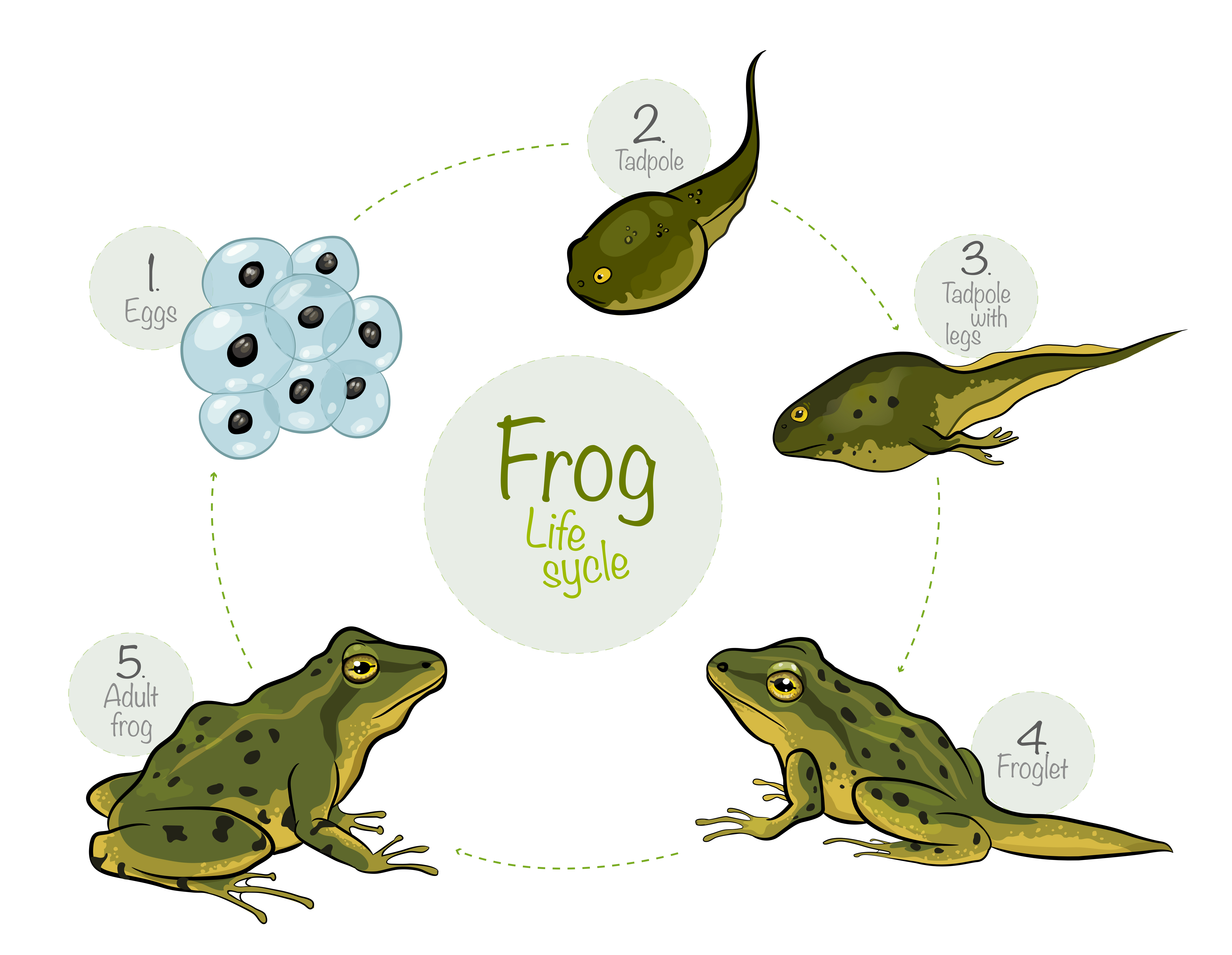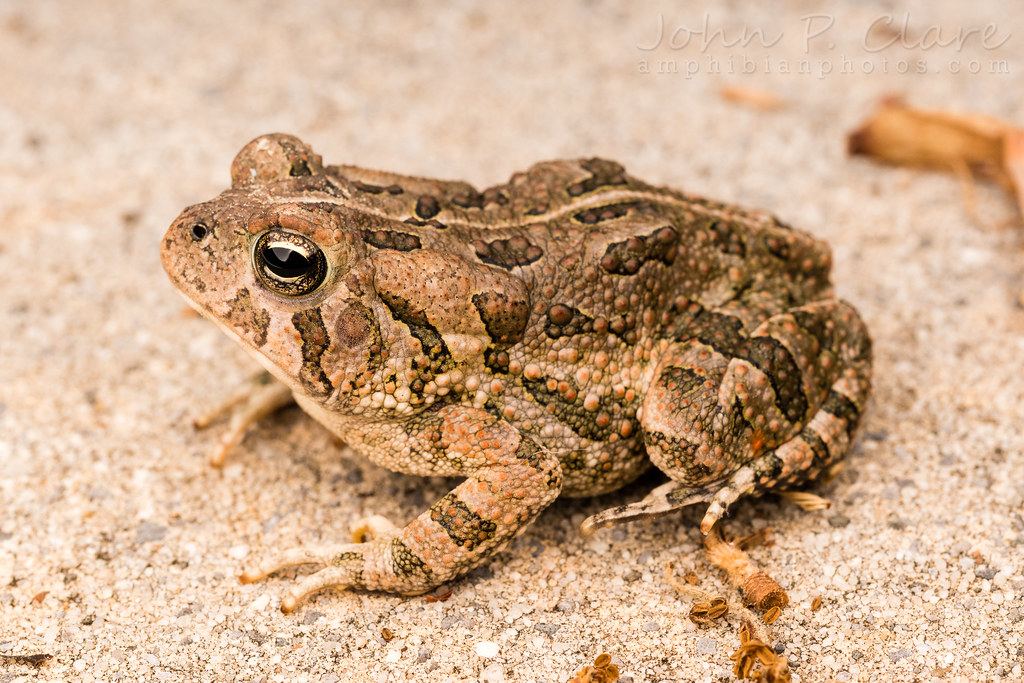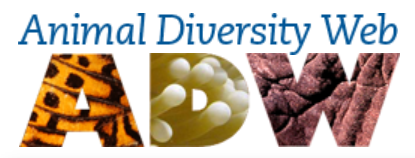Wonders of Wildlife: Fowler's Toad
Fowler's Toad
Scientific Name: Anaxyrus fowleri
Found in Alabama: Common statewide
Diet: Herbivore (eats plants) as tadpoles
Carnivore (eats animals) as adults |
|
Fowler's Toad in Habitat
Wikimedia - John J. Mosesso, NBII
Click image to enlarge it |
Learn more about...
| CLASSIFICATION |
|
What type of animal am I?
- I am a vertebrate (an animal with a spine or backbone).
- I am cold-blooded, so I cannot control my body temperature.
- I do not have scales, feathers, or fur, so I have smooth skin.
- When I am a larva (tadpole), I breathe using gills, and when I am an adult, I breathe using lungs.
- I have 4 legs.
|
Scientists use basic traits to group animals into different taxonomic classes.
For a taxonomic classification chart comparing key traits of common backyard wildlife,
CLICK HERE! |
|
| The Fowler's Toad is an AMPHIBIAN! |
| IDENTIFICATION TIPS |
|
Fowler's Toad
Wikimedia - Judy Gallagher
Click image to enlarge it
|
ADULT FOWLER'S TOAD |
- Body size ranges from 2-4 inches in length
|
- Brown, gray, or olive green in color with darker spots on the back and a light line running down the back
|
- Have warty looking skin with at least three warts in each dark spot
|
- Males are smaller than females and have a darker colored throat than females
|
| |
|
|
| EGGS |
TADPOLES (Larvae) |
TOADLETS |
| Jelly-like and arranged in strings |
Up to 2.5 inches in length |
Range from size of tadpole to size of adult (2-4in) |
American Toad Egg Strand
(closely related species)
Ryan Hodnett - Wikimedia
Click image to enlarge it |
Fowler's Toad Tadpoles
Amphibian Foundation
Click image to enlarge it |
American Toad Toadlet
(closely related species)
Dreamstime
Click image to enlarge it |
| ADAPTATIONS |
| |
| PHYSICAL ADAPTATIONS |
| |
| Fowler's toads avoid predators using camouflage: |
- A Fowler's toads mottled gray and brown coloration allow it to easily blend into its surroundings.
- This camouflage (ability to blend in to the surrounding environment) helps it avoid predators (animals that eat them) and other threats.
|
| |
| Fowler's toads defend themselves using a toxin: |
- Fowler's toads have two bean-shaped bumps on the back of the neck called paratoid glands.
- If approached by a threat, they use these glands to secrete a white fluid called bufotoxin.
- This toxin causes nausea and burning of the mouth for the animals that bite them.
|
| |
| Fowler's toads have tongues that help them capture prey: |
- The tongue of a Fowler's toad is long and is attached at the front of the mouth, allowing it to launch as far as possible to capture prey (animals they eat).
- Frog and toad tongues are made of extremely soft tissues, giving them the ability to hold on to the prey.
- Their tongues are not "sticky" like a piece of tape. Instead, their saliva is able to convert back and forth between a liquid watery texture and a thick, sticky texture.
- When a toad is at rest, the saliva is watery and not sticky. As a frog sticks out its tongue to capture prey (animal that it eats), the liquid saliva that surrounds the animal becomes thicker and stickier, trapping the animal.
- Once the animal is inside the toad's mouth, the frog uses its eyes to push against the food item to help release it from the tongue, allowing the frog to swallow its food.
|
| |
| |
| BEHAVIORAL ADAPTATIONS |
| |
| Fowler's toads are nocturnal: |
- They are active during the night (nocturnal).
|
| |
| Fowler's toads communicate with one another: |
- During the breeding season, male Fowler's toads gather around shallow sources of water.
- Males make a high-pitched sheep-like cry that the females recognize.
- The males have a vocal pouch that allows the sound to travel in the direction that he is facing.
|
Fowler's Toad Calling
Flickr - Northeast Barrier & Coastal Network
Click image to enlarge it
|
| |
| Fowler's toads burow to help control body temperature: |
- The Fowler's toad is cold-blooded and does not produce its own body heat like we do.
- It relies on the surrounding environment to help regulate its body temperature.
- During warmer dry days, they burrow in sandy substrate as a way to stay cool and moist.
- During the colder months, they burrow and enter a state of hibernation (becoming dormant as if it is in a deep sleep).
- During hibernation, its breathing and hearbeat slow down like your breathing and heartbeat slows down while you are asleep.
|
| LIFE CYCLE |
| |
|
Frog Life Cycle
Wikimedia - Derek Ramsey
Click image to enlarge it |
|
Metamorphosis is the process of physical change that some animals go through as they transform from a larvae into an adult. |
|
| |
|
| Four Life Cycle Stages of the Fowler's Toad |
| |
|
|
| 1. Egg: |
- Females lay an average of 7,000 small, soft-shelled eggs each breeding season.
- Eggs are laid in standing water attached to aquatic (water) plants and form jelly-like strings.
|
| |
|
|
| 2. Tadpole: |
- Baby toads that hatch from the eggs are called tadpoles.
- Once the larvae (tadpoles) emerge from the eggs, they are independent.
- Tadpoles live in an aquatic (water) habitat.
- Tadpoles do not have legs.
- They do not have lungs to breathe like we do. They have gills like fish for breathing.
|
Fowler's Toad Tadpoles
Amphibian Foundation
Click image to enlarge it |
| |
|
|
| 3. Toadlets: |
- As a tadpole undergoes metamorphosis (physical change) from tadpole to adult, it grows hind legs and front legs as the tail begins to shorten.
- The gills will reduce as the lungs begin to enlarge.
- During this transition, the Fowler's toad goes through the toadlet stage where they begin to resemble the adult but have not fully developed all of the adult features.
|
American Toadlet
(closely related species)
Dreamstime
Click image to enlarge it
|
| |
|
|
| 4. Adult: |
- Adult Fowler's toads have fully formed legs and lungs and are able to live on land.
|
Fowler's Toad
Flickr - John P Clare
Click image to enlarge it
|
| |
|
| Life Span: |
- Fowler's toads have an average life span of 5 years.
|
NATURAL
Habitat Needs |
ADULTS |
YOUNG |
| Food |
- Carnivores (eat animals).
- Feed on ants, beetles, flies and their larva (young), and other invertebrates (animals without a backbone) such as snails.
|
- Herbivores (eat plants).
- Feed on plants and algae in the water as well as bacteria found on underwater rocks.
|
| Water |
- Water is essential for keeping their bodies moist and hydrated.
- Preferable water sources include ponds, creeks, marshes, ditches, and flooded fields.
|
- Tadpoles live in bodies of standing freshwater such as ponds, ditches, marshes, slow moving creeks, and flooded fields.
|
| Shelter |
- Live in and around aquatic (water) habitats.
- They prefer open habitats such as woodlands, meadows, and beaches but will also live in woodlands.
- They will burrow into the sand or other loose substrate.
|
- Tadpoles hide among the substrate along the bottom surfaces of the shallow water.
|
| Places to Raise Young |
- Eggs are deposited in permanent sources of standing freshwater like ponds and lakes.
- They prefer to lay eggs in sources of freshwater that have plants.
- Tadpoles are independent from parents once they hatch.
|
|
BACKYARD
Habitat Needs |
ADULTS |
YOUNG |
| Food |
- Provide a shallow pond that will attract insects that lay their eggs in water like dragonflies.
- Provide native grasses, wildflowers and shrubs that support insects and other invertebrates (animals that do not have a backbone).
- Do not spray pesticides that might harm insect populations.
- See AWF's Frog Habitat Project Plan for a list of materials & plant suggestions.
|
- Provide a water source such as a shallow pond that is able to support algae and aquatic vegetation (plants).
- Do not remove rocks, logs, or vegetation from standing sources of freshwater such as ponds or bogs.
|
| Water |
- Add a source of still freshwater such as a boggy area or shallow pond.
|
| Shelter |
- Leave some grasses un-mowed, provide wildflowers and understory vegetation (plants).
- Create a bog with a sandy substrate where they can burrow.
|
- Do not remove rocks or aquatic vegetation (plants) from sources of freshwater.
|
| Places to Raise Young |
- If a standing source of freshwater is not located nearby, create a bog with standing water where eggs can be deposited.
|
|
| ECOLOGICAL ROLE |
| |
|
| Animals play an important ecological role in the health of habitats and ecosystems. |
| |
|
Food Source: |
- Fowler’s toads serve as a food source for Eastern hog-nosed snakes, birds such as shrikes, and small mammals.
|
| |
|
Insect Population Control: |
- Fowler’s toads play an important role in controlling the populations of the invertebrate species on which they feed.
|
| |
|
Indicator Species: |
- The thin skin on adult Fowler's toads and other amphibians makes them vulnerable to absorbing toxic materials and pollutants present in the environment.
- A decrease in population size might indicate an increase in harmful chemicals in an ecosystem.
|
INFORMATION SOURCES FOR THIS SPECIES
.



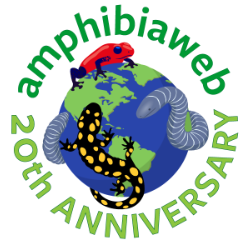


 Wildlife Tag
Wildlife Tag
